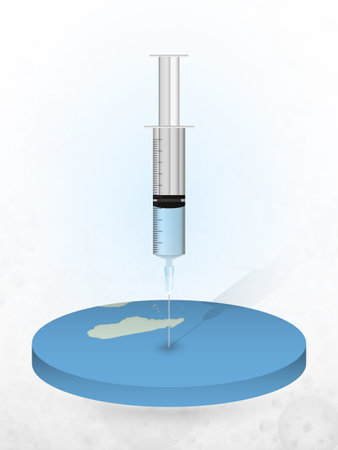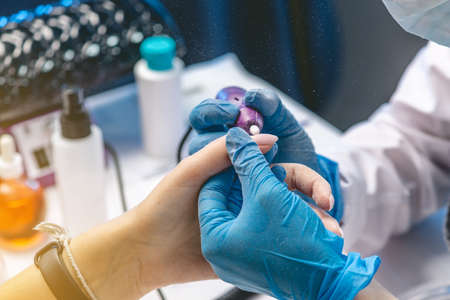Introduction to Microneedling in the UK
Microneedling has swiftly become a mainstay in British aesthetic clinics, celebrated for its minimally invasive approach and impressive results. This innovative treatment involves creating tiny punctures in the skin with fine needles, stimulating natural collagen production and encouraging skin renewal. The allure of microneedling among UK clients lies in its ability to address a range of concerns—such as fine lines, acne scars, enlarged pores, and uneven texture—without the need for surgery or extended downtime. As British aesthetics increasingly favour subtle yet effective enhancements, microneedling fits seamlessly into the landscape, offering a modern solution for those seeking radiant, rejuvenated skin. Its popularity continues to rise across the UK, reflecting a growing demand for advanced, non-surgical treatments that deliver noticeable improvements while maintaining a natural appearance.
Popular Non-Surgical Treatments Commonly Combined with Microneedling
In British aesthetic clinics, microneedling rarely stands alone. Its efficacy is often amplified when combined with other non-surgical treatments that address a variety of skin concerns, offering clients a truly bespoke approach to rejuvenation. Understanding which treatments are most frequently paired with microneedling can help you make informed choices about your own skincare journey.
Chemical Peels: Refining and Brightening
Chemical peels are a classic favourite for those seeking a brighter, more even complexion. When used alongside microneedling, peels can further exfoliate the skin, enhancing the absorption of active ingredients and accelerating results. British clinics often recommend lighter peels post-microneedling for optimal safety and effectiveness.
Mesotherapy: Deep Nourishment for Radiant Skin
Mesotherapy involves micro-injections of vitamins, minerals, and other nourishing substances directly into the skin’s middle layer. When paired with microneedling, this treatment allows these potent ingredients to penetrate deeper, leading to improved hydration and radiance—a perfect solution for anyone facing the effects of the unpredictable British weather.
LED Therapy: Soothing and Accelerating Recovery
LED light therapy is commonly introduced after microneedling sessions to calm inflammation and speed up healing. Blue light targets bacteria, while red light promotes collagen production and soothes redness. This gentle yet effective combination is especially popular among clients who value minimal downtime.
The British Favourites: Profhilo & Dermal Fillers
Injectables have earned their place as staples in UK aesthetic clinics. Profhilo, known for its unique ability to boost hydration and stimulate collagen without altering facial contours, is frequently used alongside microneedling for a subtle, natural glow. Dermal fillers, meanwhile, add volume and smoothness where needed, complementing the texture-improving effects of microneedling beautifully.
Treatment Combinations at a Glance
| Treatment | Main Benefits | Why Combine with Microneedling? |
|---|---|---|
| Chemical Peels | Brighter, smoother skin | Enhances exfoliation and ingredient absorption |
| Mesotherapy | Nourishment & hydration | Deeper delivery of revitalising nutrients |
| LED Therapy | Soothed skin & reduced downtime | Calms post-treatment redness & boosts healing |
| Profhilo Injectables | Hydration & collagen boost | Amplifies glow & firmness naturally |
| Dermal Fillers | Volume restoration & smoothing | Complements texture improvement from microneedling |
Your Personalised Path to Radiance
The artful combination of microneedling with these popular non-surgical treatments reflects the best of British aesthetics—subtlety, customisation, and an emphasis on natural beauty. Consulting with a reputable clinic ensures your treatment plan is tailored precisely to your skin’s needs, helping you achieve luminous results with confidence and care.

3. Benefits of Combining Treatments: British Client Perspectives
In recent years, there has been a noticeable shift in the preferences of clients visiting aesthetic clinics across the UK. More and more, British clients are opting to combine microneedling with other non-surgical treatments such as chemical peels, dermal fillers, or LED therapy. This trend is fuelled by a desire for enhanced results, greater convenience, and better cost-effectiveness—a combination that perfectly suits the British penchant for practicality and value.
Enhanced Results Tailored to Individual Needs
Many UK clients find that blending microneedling with complementary procedures can amplify the benefits of each treatment. For example, while microneedling stimulates collagen production and skin renewal, pairing it with a hydrating facial or light-based therapy may further improve texture and radiance. Practitioners in British clinics often highlight how these combinations can be customised to address multiple concerns in one go—such as fine lines, pigmentation, and loss of elasticity—providing visible improvements that encourage confidence in everyday life.
Convenience Suited to Busy Lifestyles
Time is precious, especially for clients juggling demanding jobs, family commitments, or social engagements. By offering combined treatments during a single appointment, UK clinics cater to those seeking efficient solutions without compromising on quality. Clients appreciate not having to book separate sessions over weeks or months; instead, they enjoy streamlined experiences that fit neatly into their busy schedules—an approach that aligns well with the fast-paced rhythm of British urban life.
Cost-Effectiveness and Smart Spending
Another significant advantage noted by both practitioners and clients is the potential for savings when bundling treatments. Many reputable clinics offer package deals or reduced rates for combined services, which resonates with cost-conscious Brits who value getting the most from their investment. Rather than viewing aesthetics as an indulgence, this pragmatic approach allows clients to prioritise self-care while remaining financially savvy.
Professional Insights: Practitioner Viewpoints
Aesthetic professionals across the UK observe that combining treatments enables them to deliver more holistic care. By tailoring protocols to individual skin types and goals, practitioners can achieve optimal results with minimal downtime—a crucial factor for discerning British clientele. This collaborative relationship fosters trust and ensures that clients feel supported at every stage of their aesthetic journey.
A Culture of Confidence and Personal Empowerment
The rising popularity of combination therapies in British clinics reflects a broader cultural shift towards self-assurance and empowerment. Clients are increasingly proactive about investing in their appearance—not out of vanity, but as a means of feeling comfortable in their own skin. Ultimately, the synergy between microneedling and other non-surgical options offers a compelling blend of science-backed results, practicality, and thoughtful care that resonates deeply within the UK’s aesthetic landscape.
4. Safety and Best Practices in British Aesthetic Clinics
When combining microneedling with other non-surgical treatments in British aesthetic clinics, the safety of clients and the achievement of optimal outcomes remain the highest priorities. The UK’s robust framework of training, regulatory guidelines, and clinical protocols sets a high standard for practitioners, ensuring that every treatment is performed with skill, care, and professionalism.
UK Training Standards for Aesthetic Practitioners
British practitioners who offer microneedling alongside other non-surgical procedures are required to undergo comprehensive training accredited by recognised bodies such as the Joint Council for Cosmetic Practitioners (JCCP) or the British Association of Cosmetic Nurses (BACN). These courses cover anatomy, skin health, contraindications, and specific combination protocols to reduce risk while maximising results. Regular refresher sessions and continuing professional development (CPD) are strongly encouraged across reputable clinics.
Regulatory Guidelines and Compliance
The UK aesthetic sector is regulated under guidance from bodies like the Care Quality Commission (CQC) and the General Medical Council (GMC), which set out strict standards regarding hygiene, consent, patient assessment, and aftercare. It is essential that every clinic adheres to these regulations not only to maintain legal compliance but also to foster trust with their clients.
Summary of Key UK Safety Protocols
| Protocol Area | Best Practice in British Clinics |
|---|---|
| Consultation & Consent | Thorough medical history, full explanation of risks/benefits, and written informed consent prior to any combined treatment. |
| Hygiene & Sterilisation | Use of medical-grade sterilised equipment; strict hand hygiene; single-use needles for microneedling. |
| Treatment Planning | Bespoke protocols based on individual skin type, medical background, and desired outcome; staged approach for combined treatments. |
| Aftercare Support | Clear written instructions; access to follow-up appointments; 24-hour contact for post-treatment concerns. |
| Incident Management | Immediate reporting procedures; access to emergency first aid; robust documentation of all incidents or adverse events. |
Championing Patient Wellbeing Across the UK
The commitment to safety goes beyond compliance—it’s about caring for people with integrity. Leading British clinics encourage open dialogue so patients feel comfortable discussing concerns at any point. This culture of transparency fosters confidence and ensures that each client’s journey is both safe and empowering when exploring combined microneedling and non-surgical treatments.
5. Tailoring Treatment Plans to British Skin Types and Lifestyles
When combining microneedling with other non-surgical treatments in British aesthetic clinics, it’s vital to recognise the unique characteristics of British skin types and the everyday realities of living in the UK. Customising treatment plans begins with a thoughtful assessment of common British skin concerns such as sensitivity, rosacea, pigmentation irregularities, and the challenges posed by a cool, damp climate. Most Britons have fair to medium complexions that are prone to redness, uneven tone, or sun damage—despite our famously unpredictable weather, UV exposure is still a factor worth considering.
Understanding the Impact of British Weather
The British climate—with its frequent rain, lower levels of sunlight, and fluctuating temperatures—can leave skin feeling dehydrated or dull. When planning microneedling combinations, practitioners should advise clients on hydrating serums or barrier-repair treatments alongside collagen induction therapy. Pairing microneedling with gentle LED light therapy or vitamin-rich infusions can help counteract environmental stressors while respecting sensitive skin barriers.
Lifestyle Habits and Their Influence
British lifestyle habits also play a role in shaping tailored treatment plans. For instance, city dwellers may be exposed to higher pollution levels, which accelerates ageing and dullness—making antioxidant boosters an excellent addition to microneedling sessions. Meanwhile, those who enjoy outdoor pursuits, such as walking or cycling, will benefit from extra UV protection and calming post-treatment care. It’s crucial for practitioners to offer practical aftercare advice that fits seamlessly into busy routines, such as recommending mineral-based SPF and simple skincare regimens.
Personalised Combinations for Best Results
No two clients are the same; therefore, blending microneedling with other non-surgical options like chemical peels or injectable hydrators must be done thoughtfully. A careful patch test and gradual introduction of new treatments help avoid irritation in more reactive British skin types. By combining clinical expertise with genuine understanding of local needs and preferences, aesthetic professionals empower their clients to achieve naturally radiant results—building both confidence and trust every step of the way.
6. Emerging Trends and Innovations in the UK
The British aesthetic landscape is constantly evolving, with clinics embracing cutting-edge technologies and novel combinations to enhance patient outcomes. One of the most significant trends is the integration of microneedling with advanced non-surgical treatments, tailored specifically for the preferences and needs of UK clientele. Clinics across London, Manchester, and Edinburgh are investing in innovative devices that combine radiofrequency with microneedling, offering patients superior skin tightening and rejuvenation results without invasive procedures.
Popular Products Shaping the Market
Leading British clinics have adopted a range of premium products to elevate treatment standards. Growth factor serums, peptide-rich ampoules, and pharmaceutical-grade hyaluronic acid boosters are frequently used alongside microneedling to maximise collagen induction and hydration. Furthermore, British brands prioritise safety and efficacy, often opting for CE-marked products that comply with strict UK regulations.
Technological Advances Leading the Way
Device innovation is at the heart of this trend. The latest microneedling pens offer adjustable depths and precise control, allowing practitioners to personalise treatments for every skin type. Additionally, hybrid machines combining microneedling with LED light therapy or fractional radiofrequency are gaining popularity for their multi-layered approach to skin health. These developments reflect a uniquely British commitment to both safety and sophistication.
Consumer Preferences Influencing Treatment Choices
British clients are increasingly well-informed and discerning, seeking natural-looking results with minimal downtime. As a result, there’s been a marked rise in demand for combination therapies that address multiple concerns—such as fine lines, pigmentation, and scarring—in one session. Practitioners now frequently blend microneedling with chemical peels or injectable vitamins to deliver bespoke solutions that align with contemporary beauty ideals in the UK.
The evolution of combined non-surgical treatments in Britain is underpinned by a blend of technological prowess and an understanding of local aesthetics. By staying attuned to these emerging trends and innovations, UK clinics continue to set high standards in the realm of safe, effective, and sophisticated skin care.
7. Client Experience: From Consultation to Aftercare
Step One: The British Consultation Etiquette
Every successful aesthetic journey in the UK begins with a thorough consultation. British clinics pride themselves on creating a welcoming environment—expect a warm greeting and an emphasis on your comfort and privacy. Practitioners will listen attentively, encouraging you to voice your goals and concerns without judgement. There’s a strong cultural focus on transparency, so you’ll receive honest advice about the suitability of combining microneedling with other non-surgical treatments like dermal fillers or chemical peels. In the UK, it’s customary for practitioners to provide detailed explanations of each procedure, ensuring you feel informed and empowered before making any decisions.
Step Two: The In-Clinic Experience
On treatment day, British clinics are known for their professionalism and calming atmosphere. You’ll find staff respectful of your time and personal space, maintaining a discreet yet attentive presence. When combining microneedling with adjunctive treatments, practitioners typically follow a bespoke plan tailored to your skin type and needs—a hallmark of British attention to detail. Throughout, expect clear communication about what sensations to anticipate, how long each step will take, and opportunities to ask questions at every stage. This approach helps reduce anxiety and ensures you remain comfortable from start to finish.
Step Three: Culturally Relevant Aftercare Advice
After your procedures, aftercare is prioritised with typically British thoroughness. You’ll receive written guidance alongside verbal instructions—often including contact details should you have further queries. Post-microneedling care may involve gentle cleansing with products suitable for sensitive British complexions and advice about avoiding harsh weather, which is particularly relevant given the UK’s changeable climate. Clinics often recommend broad-spectrum sunscreen due to the unpredictability of British sun exposure, as well as reminders to avoid steam rooms or vigorous exercise for a few days. Practitioners may also schedule a follow-up appointment as part of standard practice, reflecting the UK’s commitment to client safety and satisfaction.
The Importance of Empathy and Support
British clinics emphasise empathy throughout the process—if you’re nervous or unsure at any stage, practitioners will offer reassurance rather than pressure. This gentle approach fosters trust and encourages open dialogue about results or concerns post-treatment.
Your Pathway to Confidence
The combination of microneedling with other non-surgical treatments in British aesthetic clinics is more than just a procedure—it’s a thoughtfully curated journey from initial consultation through to aftercare. With their blend of professionalism, honesty, and genuine support, British clinics ensure that every client feels respected and confident throughout their transformation.


